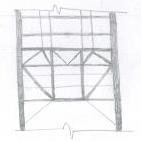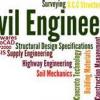-
Posts
475 -
Joined
-
Last visited
-
Days Won
242
Reputation Activity
-
 EngrUzair got a reaction from Waqar Saleem in Mentorship And Internship!!!
EngrUzair got a reaction from Waqar Saleem in Mentorship And Internship!!!
Aoa.
I agree with haro0n that this is a very nice topic. Thanks to waqar saleem for starting this important topic.
IMHO, this sub-forum is a very good platform for the engineering students in several ways. For example, here they can discuss their structure related problems, learn practical aspects of civil & structural engineering and share their structural knowledge as well.
This all is however not possible without active participation from seniors. I understand that the seniors, especially the experienced ones, might be very busy in their professional duties (experience in structural engineering means a lot of study as well as a lot of hard work). and they may not having much time to spare for this forum.
Everybody who works in an office, organization or firm as a structural engineer, gathers experience by carrying out different types of design jobs. Therefore, he/she can and should share his/her experience at this forum, whenever a similar problem is discussed here.
I however sincerely feel that all of us should give some time to this Forum, particularly 'students zone' sub-forum regularly, and share our experience and knowledge here.
This would certainly help our student colleagues, in developing better ideas and learning more practical engineering knowledge, thereby making them better engineers.
I will myself, insha-allah, try to visit this sub-forum as regularly as possible, and to share whatever experience and knowledge I have gathered, as and when it may be needed.
@Abdul Razzaque, and @Musawer!
It is my personal experience that it is very difficult to learn structural designing on your own, unless you have an actual job to do. Similar is the case of application of a structural software (e.g., ETABs, SAP2000, etc.) for practical design of structures. No doubt that you may learn the use of ETABS etc and get certificate for it as well. however, you cannot use it properly or efficiently, if you do not understand how various commands & options of ETABS relate to a real structure.
At this forum, strictly IMHO, it is not possible for any one to teach you structural engineering, or modeling with ETABS etc, from scratch.
The best possible way therefore should be that you should look around you and find some experienced structural engineer, whether working on his own or for some organization or firm. Start working for him, even if you have to work without any financial benefits, and ask him to give you some actual job for designing. Once you get some real design job, you may use your engineering knowledge, and ETABS as well (if it is frame type structure) to perform the structural designing. You may discuss the practical aspects of your assigned job in this forum (in addition to asking your structural engineer boss), should you have some queries or need some help in performing its design. In this way, you are more likely to learn structural designing as well as practical use of structural software (ETABS etc).
WORD OF CAUTION: Always remember that no software (ETABS or else) is a structural engineer. It is just a better quality calculator, that can help the structural engineer analyze and design structural frames comparatively quickly and reliably, provided you understand the capabilities & limitations of the software very well, and can apply them to your structural problem correctly.
-
 EngrUzair got a reaction from UmarMakhzumi in Mentorship And Internship!!!
EngrUzair got a reaction from UmarMakhzumi in Mentorship And Internship!!!
Aoa.
I agree with haro0n that this is a very nice topic. Thanks to waqar saleem for starting this important topic.
IMHO, this sub-forum is a very good platform for the engineering students in several ways. For example, here they can discuss their structure related problems, learn practical aspects of civil & structural engineering and share their structural knowledge as well.
This all is however not possible without active participation from seniors. I understand that the seniors, especially the experienced ones, might be very busy in their professional duties (experience in structural engineering means a lot of study as well as a lot of hard work). and they may not having much time to spare for this forum.
Everybody who works in an office, organization or firm as a structural engineer, gathers experience by carrying out different types of design jobs. Therefore, he/she can and should share his/her experience at this forum, whenever a similar problem is discussed here.
I however sincerely feel that all of us should give some time to this Forum, particularly 'students zone' sub-forum regularly, and share our experience and knowledge here.
This would certainly help our student colleagues, in developing better ideas and learning more practical engineering knowledge, thereby making them better engineers.
I will myself, insha-allah, try to visit this sub-forum as regularly as possible, and to share whatever experience and knowledge I have gathered, as and when it may be needed.
@Abdul Razzaque, and @Musawer!
It is my personal experience that it is very difficult to learn structural designing on your own, unless you have an actual job to do. Similar is the case of application of a structural software (e.g., ETABs, SAP2000, etc.) for practical design of structures. No doubt that you may learn the use of ETABS etc and get certificate for it as well. however, you cannot use it properly or efficiently, if you do not understand how various commands & options of ETABS relate to a real structure.
At this forum, strictly IMHO, it is not possible for any one to teach you structural engineering, or modeling with ETABS etc, from scratch.
The best possible way therefore should be that you should look around you and find some experienced structural engineer, whether working on his own or for some organization or firm. Start working for him, even if you have to work without any financial benefits, and ask him to give you some actual job for designing. Once you get some real design job, you may use your engineering knowledge, and ETABS as well (if it is frame type structure) to perform the structural designing. You may discuss the practical aspects of your assigned job in this forum (in addition to asking your structural engineer boss), should you have some queries or need some help in performing its design. In this way, you are more likely to learn structural designing as well as practical use of structural software (ETABS etc).
WORD OF CAUTION: Always remember that no software (ETABS or else) is a structural engineer. It is just a better quality calculator, that can help the structural engineer analyze and design structural frames comparatively quickly and reliably, provided you understand the capabilities & limitations of the software very well, and can apply them to your structural problem correctly.
-
 EngrUzair reacted to Waqar Saleem in Mentorship And Internship!!!
EngrUzair reacted to Waqar Saleem in Mentorship And Internship!!!
in engineering mentorship is very important for fresh engineers/final year students to get boost in learning basic techniques and practical knowledge from experienced seniors so is the internship for serious students.i request seniors that please show their willingness for mentorship and accommadte freshers/.final year students with them.that wud be great help for engineering students.please upload your willingness here and your field of experties and your location.thanx
-
 EngrUzair got a reaction from Badar (BAZ) in Lift Forces
EngrUzair got a reaction from Badar (BAZ) in Lift Forces
Aoa.
@baz!
Bundle of thanks for contributing such a nice article, full of practical knowledge.
-
 EngrUzair reacted to Badar (BAZ) in Lift Forces
EngrUzair reacted to Badar (BAZ) in Lift Forces
I have never considered them; never bothered about them. You do need to know the load path. Elevator loading is considered as impact, and are usually increased by 100%.
I have attached a pdf, that might be helpful to you.
elevators for tall buildings.pdf
-
 EngrUzair got a reaction from Sami Ullah Khan Bangash in Torsion: Reinforced Concrete Members
EngrUzair got a reaction from Sami Ullah Khan Bangash in Torsion: Reinforced Concrete Members
Thanks for a good informative article on torsional aspects of RC members. However, it is suggested that references to relevant codes or documents should be complete, for easy following of information and checking back the original reference for further study. For example, it took me a while to figure out which edition was being referred to, since the year of ACI 318 being referred was missing.
Accordingly, a little addition of references.
The above article refers generally to section 11.6 of 2005 edition of ACI 318 (ACI 318-05). In 2008 and 2011 editions (ACI 318-08 and ACI318-11), however the relevant information has been moved to section 11.5. The quote portion, in new codes, is in section R11.5.1, and the new figure numbers are Fig. R11.5.2.1 and R11.5.2.2 respectively.
-
 EngrUzair got a reaction from UmarMakhzumi in Design Snow Load
EngrUzair got a reaction from UmarMakhzumi in Design Snow Load
Waqar sahib!
Can you give some practical example, how a "conservative" design snow load value can be selected for a particular city? What should be the design snow loads for Quetta and Murree?
IMHO, as structural engineers, we are responsible to design safe and economical structures. Using unlikely heavy loads, will result in larger structural members or more reinforcement, thereby making the structure uneconomical. As such, selected loads should be very realistic.
In this purview, I am interested to know how the other structural engineers are selecting snow load values for various hilly areas of Pakistan? I think, seniors should share their experience here to tell us about what snow load values they have used for their designs?, and what criteria they adopted to determine the selected snow load value? This sharing of knowledge would certainly help the younger engineers to decide at least about selection of reasonable design snow loads, in absence of standard or code-recommended values.
-
 EngrUzair got a reaction from UmarMakhzumi in Design Snow Load
EngrUzair got a reaction from UmarMakhzumi in Design Snow Load
waqar sahib!
Chapter 5 Division II of Building Code of Pakistan (Seismic Provisions-2007) provides the following information only:
1. Which load combinations are to be used for snow load.
2. How the snow load reduction factor can be calculated.
It however DOES NOT tell us recommended values of snow load (in psf or kN/m^2 etc) to be used for the design of building roofs in various areas of Pakistan. Snow does not fall in all areas of Pakistan. Moreover, snowfall intensity is not the same in different hilly area. For example, Murree receives much more snow, as compared to Quetta. As such, design snow load for these two cities will certainly be different.
I am interested to know where can I find design snow load values, applicable for structural design of building roofs located in Murree, Quetta and other hilly areas of Pakistan.
-
 EngrUzair got a reaction from UmarMakhzumi in Bridge Design Procedure
EngrUzair got a reaction from UmarMakhzumi in Bridge Design Procedure
Bridge design is a very vast subject. You will need a bridge design book (and relevant bridge design code as well) to learn how the bridges are designed. One such book is "Design of Highway Bridges, An LRFD Approach" written by Barker and Puckett. It is based on AASHTO bridge design code.
Alternately, you may search the internet for Bridge design tutorials and examples, to start with.
-
 EngrUzair got a reaction from Adil Faiyaz in Torsion: Reinforced Concrete Members
EngrUzair got a reaction from Adil Faiyaz in Torsion: Reinforced Concrete Members
Thanks for a good informative article on torsional aspects of RC members. However, it is suggested that references to relevant codes or documents should be complete, for easy following of information and checking back the original reference for further study. For example, it took me a while to figure out which edition was being referred to, since the year of ACI 318 being referred was missing.
Accordingly, a little addition of references.
The above article refers generally to section 11.6 of 2005 edition of ACI 318 (ACI 318-05). In 2008 and 2011 editions (ACI 318-08 and ACI318-11), however the relevant information has been moved to section 11.5. The quote portion, in new codes, is in section R11.5.1, and the new figure numbers are Fig. R11.5.2.1 and R11.5.2.2 respectively.
-
 EngrUzair got a reaction from UmarMakhzumi in Diaphragm Flexibility
EngrUzair got a reaction from UmarMakhzumi in Diaphragm Flexibility
Thanks for providing an interesting and practice-oriented article. I hope you will update the material very soon.
-
 EngrUzair got a reaction from Ayesha in Design Snow Load
EngrUzair got a reaction from Ayesha in Design Snow Load
waqar sahib!
Chapter 5 Division II of Building Code of Pakistan (Seismic Provisions-2007) provides the following information only:
1. Which load combinations are to be used for snow load.
2. How the snow load reduction factor can be calculated.
It however DOES NOT tell us recommended values of snow load (in psf or kN/m^2 etc) to be used for the design of building roofs in various areas of Pakistan. Snow does not fall in all areas of Pakistan. Moreover, snowfall intensity is not the same in different hilly area. For example, Murree receives much more snow, as compared to Quetta. As such, design snow load for these two cities will certainly be different.
I am interested to know where can I find design snow load values, applicable for structural design of building roofs located in Murree, Quetta and other hilly areas of Pakistan.
-
 EngrUzair reacted to Badar (BAZ) in Diaphragm Flexibility
EngrUzair reacted to Badar (BAZ) in Diaphragm Flexibility
*SEFP Consistent Design*
*Diaphragm Flexibility*
*Doc No: 10-00-CD-0004*
*Date: August 07, 2014*
I am writing this article about a very important, but mostly neglected topic of flexibility of diaphragm. I used to assume that all reinforced concrete slabs can be treated as rigid diaphragms. But as it turns out, only the slab with span-to-depth (depth is length of slab in direction of lateral loads) ratio of less than 3 and without horizontal irregularity can be treated as rigid diaphragm. The more important thing is that the span-to-depth ratio and horizontal irregularity is not the only criteria and one other factor also needs to be kept in mind before assigning rigid diaphragm to concrete slabs in numerical model of building.
Another important concept that I learned, and it was a moment of epiphany for me, is about TRANSFER diaphragms. I had posted a topic “Amplification Of Forces In Etabs” earlier in this forum but we were not able to reach at a satisfactory conclusion. Now, I have the answer to that query: Back Stay effect. Another article is required to explain it , and this concept is not discussed in this article. This article is about flexibility of diaphragm.
Diaphragms are horizontal members of the lateral-force resisting system of building structures. Their function is to distribute inertial forces, generated at its own level, as well as other levels, to vertical members of lateral-force resisting system.
One kind of diaphragm only distributes inertial forces generated at its own level. This kind of behaviour is observed in buildings where there is a continuity of vertical members of lateral-force resisting system: building should not have a setback or podium at lower levels, or below grade levels. The other kind of diaphragm, known as “Transfer diaphragm”, not only distributes inertial forces generated at its own level, but also re-distributes forces coming from upper levels. This type of behaviour is typical of a building having setback or podium at lower levels, or below grade levels. Transfer slabs can attract huge forces due to a behaviour dubbed as BACKSTAY EFFECT.
Now, coming to the issue of flexibility of diaphragm. According to ASCE 7-10,
In addition to considering aspect ratio and horizontal irregularity as a basis for assuming concrete slab as a rigid diaphragm, the relative stiffness of adjoining vertical lateral load resisting system. Buildings with shear walls at ends and flexible frames in between are the ones where the assumption of rigid diaphragm leads to underestimation of drifts and erroneous distribution of base shear in vertical as well as horizontal direction (1)(2)(3); shear forces in middle frames can be reduced to 23% if rigid diaphragm is assigned in the model (1) for buildings with this type of structural configuration.
M. Moeini et al. (2008) (3) conducted a parametric study using numerical analysis and proposed formulae that predicts the error associated with assuming concrete slab as rigid diaphragm. They also concluded that for buildings, without shear walls, rigid diaphragm assumption is suitable for irregular buildings as well. But, for long and narrow buildings with shear walls at ends, the assumption of rigid diaphragm is not suitable.
The objective of writing this article was to warn engineers about the tendency of blindly assigning rigid diaphragm to concrete slab in any type of building configuration. The result could be underestimation of forces as well as drifts.
Nakashima, M., Huang, T., Lu, L-W. “ Effect of Diaphragm Flexibility on Seismic Response of Building Structures”, In proceedings of 8th world conference on earthquake engineering. San Luis Obispo, MSc Thesis , “ An Investigation of influence of diaphragm flexibility on building design through comparison of forced vibration testing and computational analysis”, 2010. M. Moeini, B. Rafzey, W.P. Howsen, “Investigation into the floor diaphragm flexibility in rectangular reinforced concrete buildings and error formulae”, In proceedings of 14th world conference on earthquake engineering.
The article is not finalized and would be completed in coming weeks.
-
 EngrUzair reacted to UmarMakhzumi in Location Of Base For Seismic Design
EngrUzair reacted to UmarMakhzumi in Location Of Base For Seismic Design
I came across this very useful article. Here is the summary of the article:
Thanks.
Location of Base for Seismic Design.pdf
-
 EngrUzair got a reaction from shahram555 in Material Property Data
EngrUzair got a reaction from shahram555 in Material Property Data
Weight of a material is related to the its mass through the relation
W = m g --------- (1)
Dividing both sides of above equation (1) by 'g' , the relation changes to
m = W/g --------- (2)
where
W is the weight of the material
m is mass of the material
g is the acceleration due to gravity
Equation (2) gives the mass of a material in terms of weight of the material. Simply speaking, mass of of a material is obtained by dividing its the weight by g (acceleration due to gravity).
This relation holds good even if 'weight' is replaced by "weight per unit volume", AND, the 'mass' by "mass per unit volume".
You have to use consistent units in above equations.
Now coming to your question;
'Analysis Property Data' is related to the properties of the structural material you are using for the frame elements (beams, columns, etc).
For example, if you are modeling your structure as a Concrete Frame, 'Analysis Property Data' is related to the structural properties of Reinforce Concrete (denoted by "CONC", in ETABS).
In this case, using "lb-ft" units in ETABS, 'weight per unit volume' value should be about 150 lb/ft^3 (= normally used unit weight or density of reinforced concrete), with "mass per unit volume' being 150/g = 150 /32.2 = 4.658. (32.2 is the value of 'g' when the unit weight is in 'lb-ft' units).
Select the Units of your choice in ETABS, that you normally use in manual calculations, and then observe the corresponding value of 'weight per unit volume' for reinforced concrete (CONC) and structural Steel (STEEL) in 'Analysis Property Data' .
Keeping above discussion in view, and the values indicated by ETABS should hopefully make you clear regarding wherefrom these numbers have come.







